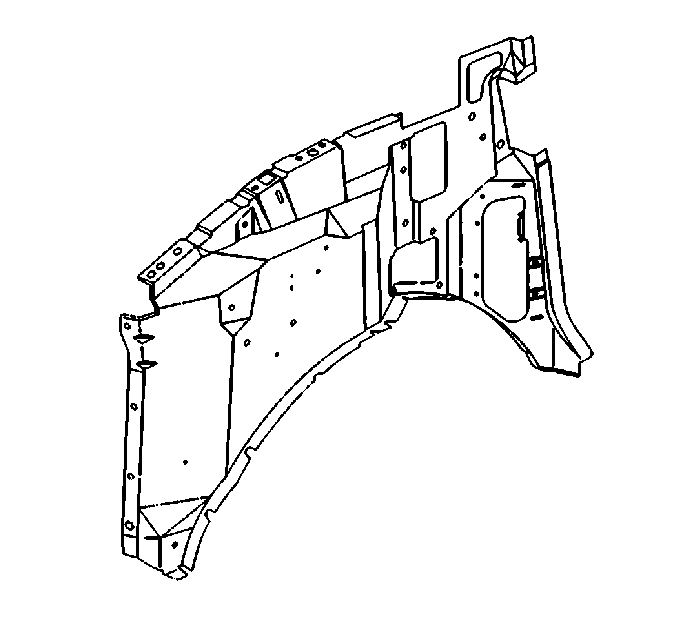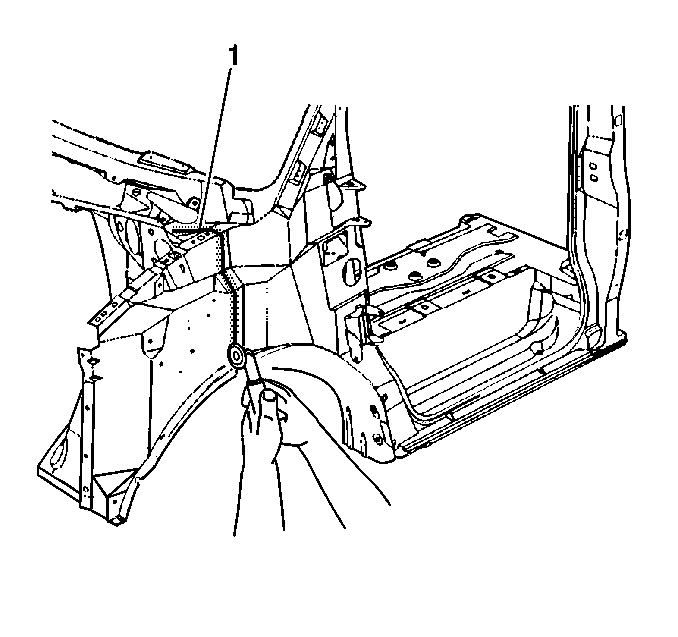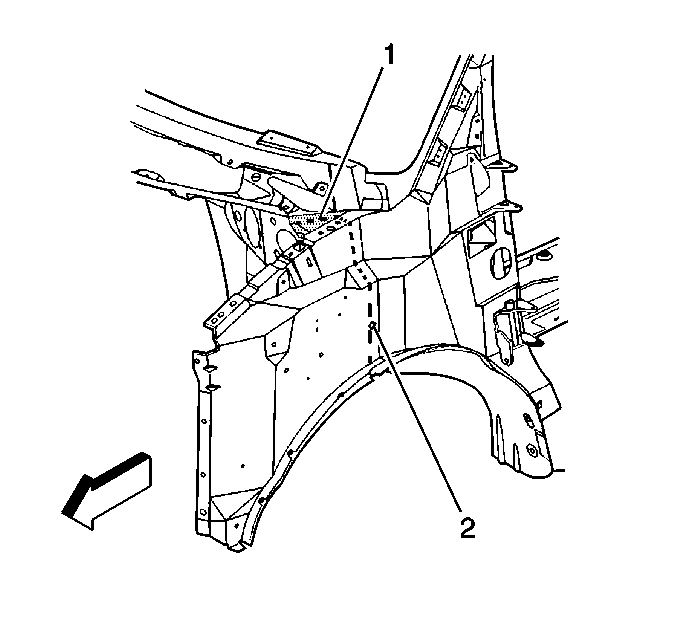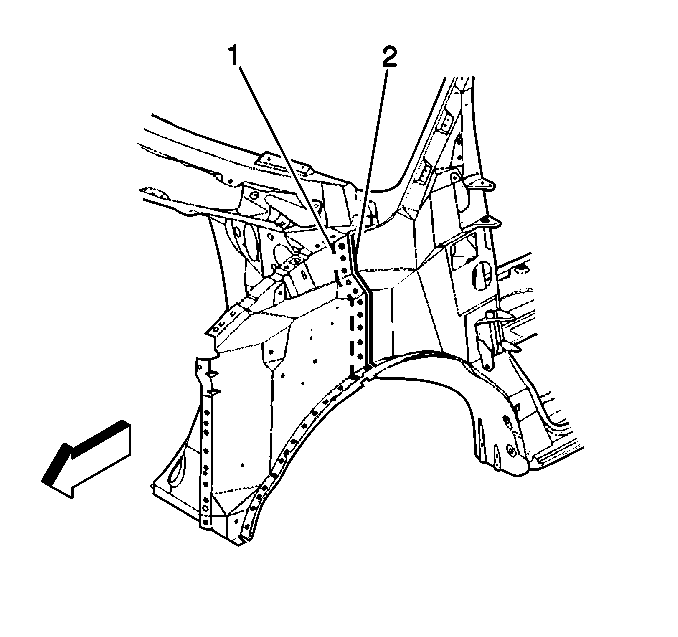For 1990-2009 cars only
Removal Procedure

Important: The front inner fender may be serviced as a complete component. However, replacement at the factory seams requires the removal of the outer door frame panel. If the damage is limited to the front portion of the inner fender, sectioning is recommended.
- Remove all related panels and components.
- Visually inspect and restore as much of the damage as possible to factory specification.
- Remove sealers and anti-corrosion materials as necessary.
- The sectioning procedure is to be performed at the door frame opening forward attachment seam (1).
- Cut the original inner fender at the front edge of the seam (1).
- Locate, mark and drill out factory spot welds attaching the inner fender to the wheelhouse and radiator support brace. Note the number and location of the welds for installation of the service panel.
- Remove the damaged section of the front inner fender.


Installation Procedure
- The service inner fender must be cut to overlap the door frame opening 25 mm (1 in).
- Temporarily position the service part over the door frame weld flange (2).
- At the hood hinge mounting area (1), the service part must be installed under the upper cowl panel and over the door frame opening weld flange (2).
- Check for proper fit and alignment. Make sure there is a flush fit at the door frame weld flange.
- Remove the service part and drill 8 mm (5/16 in) holes for plug welding as noted from the original panel and along the sectioning (1) joint 13 mm (½ in) from the cut edge.
- Install and position the modified service part according to body dimensions using three-dimensional measuring equipment.
- Plug weld accordingly.
- Use frequent measurements to ensure accurate fit and alignment to adjacent panels.
- Clean and prepare all surfaces.
- Prime with two-part catalyzed primer.
- Apply sealers and anti-corrosion materials as necessary. Do not combine paint systems. Refer to paint manufacturers recommendations.
- Install all related panels and components.

Important: The sectioned service part must be modified slightly to fit flush at the sectioning seam, and at the upper cowl panel and door frame opening weld flange.

Important: Be sure to apply seam sealer to both sides of the sectioning joint (2).
